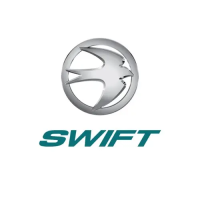ELECTRICS
84
SOLAR PANEL CONNECTION
Figure A
Cleaning and maintenance
• Use protective clothing and glasses
when handling a leaking battery, and
avoid direct contact to the skin, eyes and
respiratory organ.
• Should a battery leakage occur, please act
according to the instructions supplied by the
manufacturer of the battery. Act with caution
as caustic substances are present in the
battery.
• Always remove the battery and the power
cable before carrying out any maintenance of
the product.
• Before removing the clamps switch off
all electrical and gas appliances.
• Use a soft cloth or sponge and a non-acid/
abrasive detergent when cleaning the battery
box, soft tray or bag.
• To check if any acid is present in the soft
tray or bag, simply press it softly. A strong
smell from the soft tray may also indicate
spilled acid. Always treat spilled battery
acid as hazardous waste. Dispose of spilled
battery acid according to the local and
national regulations.
• Before the camping season or extensive
travelling, check the soft tray for faults and
replace if necessary.
• The cleaning of the battery box and soft tray
should only be done after all power sources
have been switched off, in order to prevent a
hazardous situations.
Solar panel connection point
or Solar panel fitment
Depending on specification, a solar panel
connection point, or a solar panel and
regulator, will be installed in the motorhome.
Solar Panel Connection Point
If a connection point only has been included
in the motorhome harness, a solar panel
using the provision must provide a fused
and regulated output. From the provided
connection the supply is taken to the EC400
power supply unit. This facility is designed
to be used with a maximum solar panel size
of 100 watts – if a solar panel (or panels) of
output greater than 100 watts are required,
please contact Sargent Electrical Services or
the Swift Group for further advice.
Solar charge directed to the power supply
unit can then be distributed to the leisure
battery, vehicle battery, or each battery in
turn. For further details of selecting which
battery receives the solar charge, please see
the EC400 series instructions. Please note
that solar charge can only be directed to both
batteries in this way if the System Shutdown
button is ON – if System Shutdown is OFF, any
available solar charge will be directed to the
vehicle battery only.
Solar panel installations should be undertaken
by trained technicians who are familiar with
the systems involved. Particular care should
be taken when making connections to solar
panels, which can generate high voltages
ahead of a regulator when exposed to light.
Depending upon the specification of the
motorhome, the connection point will be
presented in one of the following formats:
1. Solar panel connection point with EC400
series control panel and related power
supply unit. In these installations two way
connectors will be present close to the
leisure battery, and/or at a high level within
furniture (i.e. within a wardrobe, either visible
or behind a removable cover). The output
from a regulator, rated to suit the chosen
solar panel, should be connected to this
point.

